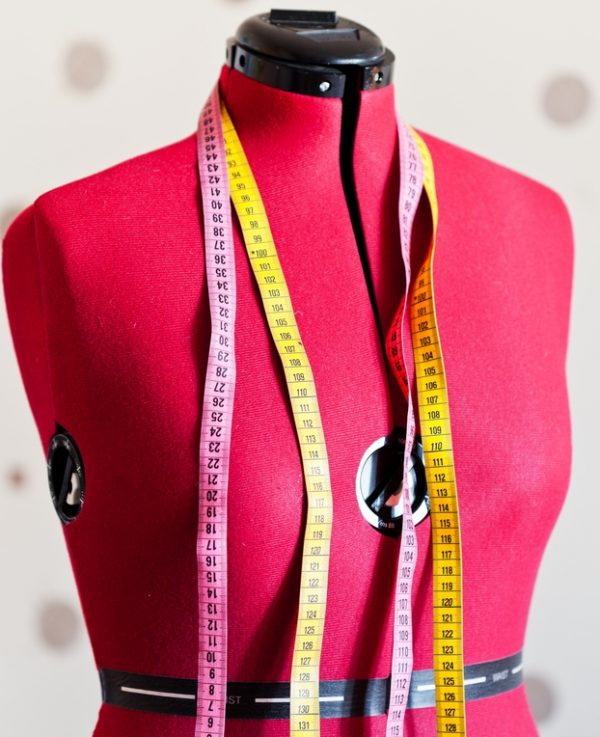
Pleats by Mary Forte
Fashion Framework Winter 2019-2020
Pleats are everywhere. And they have been for millennia. If you search the Internet for “pleats in ancient Egypt,” you will find stone and metal carvings of the ancients wearing beautiful pleated garments. The enormous ruffed collars of the 16th century and 17th century are also famous examples of pleats: think Mary Queen of Scots and Rembrandt. Today, pleats are a common fashion feature. They are also used for blinds, curtains, vacuum hoses, filters, and more.
In clothing, pleats are a series of permanent folds in fabric. Woven fabrics are typically folded, pressed, and secured with stitching. Some synthetic fabrics can actually be just folded and pressed to hold their shape. Heat pressing slightly melts the fiber, a process called “killing.” But after the work hand knitters put into all those stitches, we don’t necessarily want to “kill” our knitting. Knitted pleats are folded and secured by knitting the folded layers together. They are then blocked rather than pressed.
Types of Pleats
Fairchild’s Dictionary of Fashion lists many kinds of pleats: inverted, kick, knife, box, umbrella, and many more. As with other fashion terms with a long history, names for pleats tend to be inconsistent, so it’s best to look for an illustration or detailed description to really know which pleats a source is referring to.
The Basics
A variety of stitch patterns have the look of pleats. Wide ribbing is a classic example. These “mock pleats” are pretty, but a true pleat involves folds. Most knitted pleats have a face, a turnback, and an underside. Each layer consists of the same number of stitches.
Pleats can be folded in either of two directions:
In right-fold or “S” pleats the edge of the visible fold points to the right.
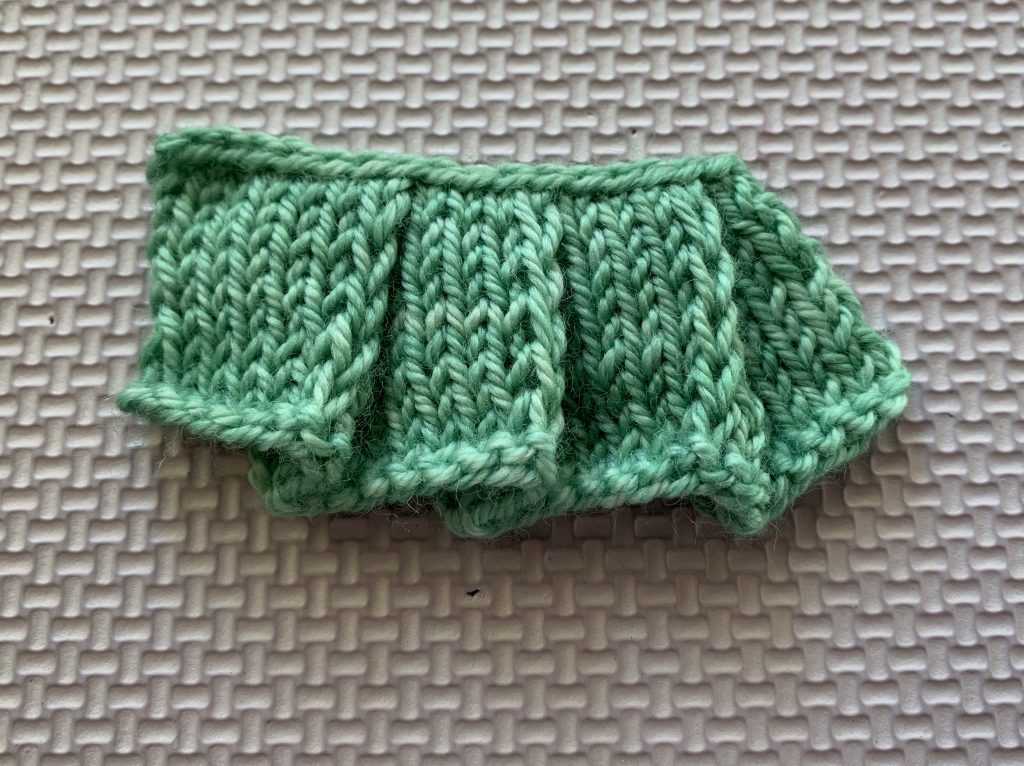
In left-fold or “Z” pleats the edge of the visible fold points to the left.
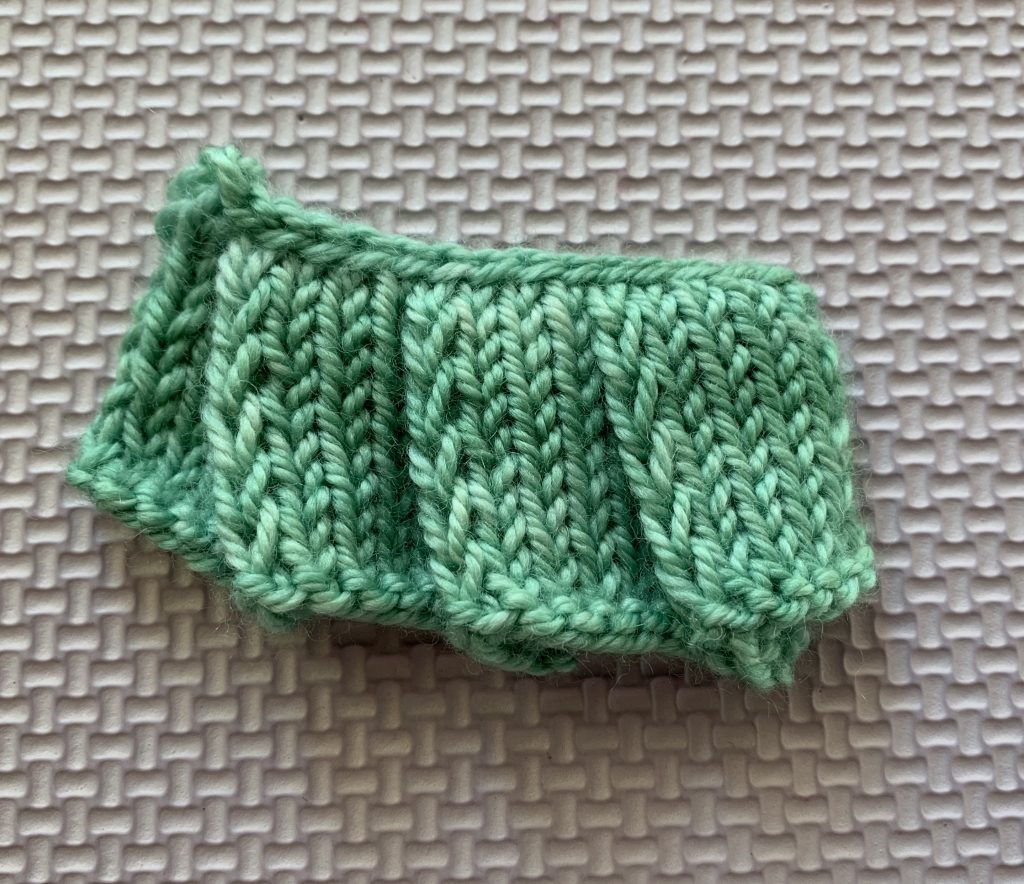
Arrangement Options
Right-fold and left-fold pleats can be arranged to achieve a variety of effects:
Knife pleats are either all right-fold or all left-fold. These pleats are common in kilts and women’s skirts. A single knife pleat can also function as a kick pleat in a skirt. The right-fold and left-fold pleats in the photos above are knife pleats.
Inverted pleats pair a right-fold pleat and a left-fold pleat with the outside folds facing each other to create a wide underside on the back. These pleats are sometimes found on the back of a jacket to make more room for shoulder movement.
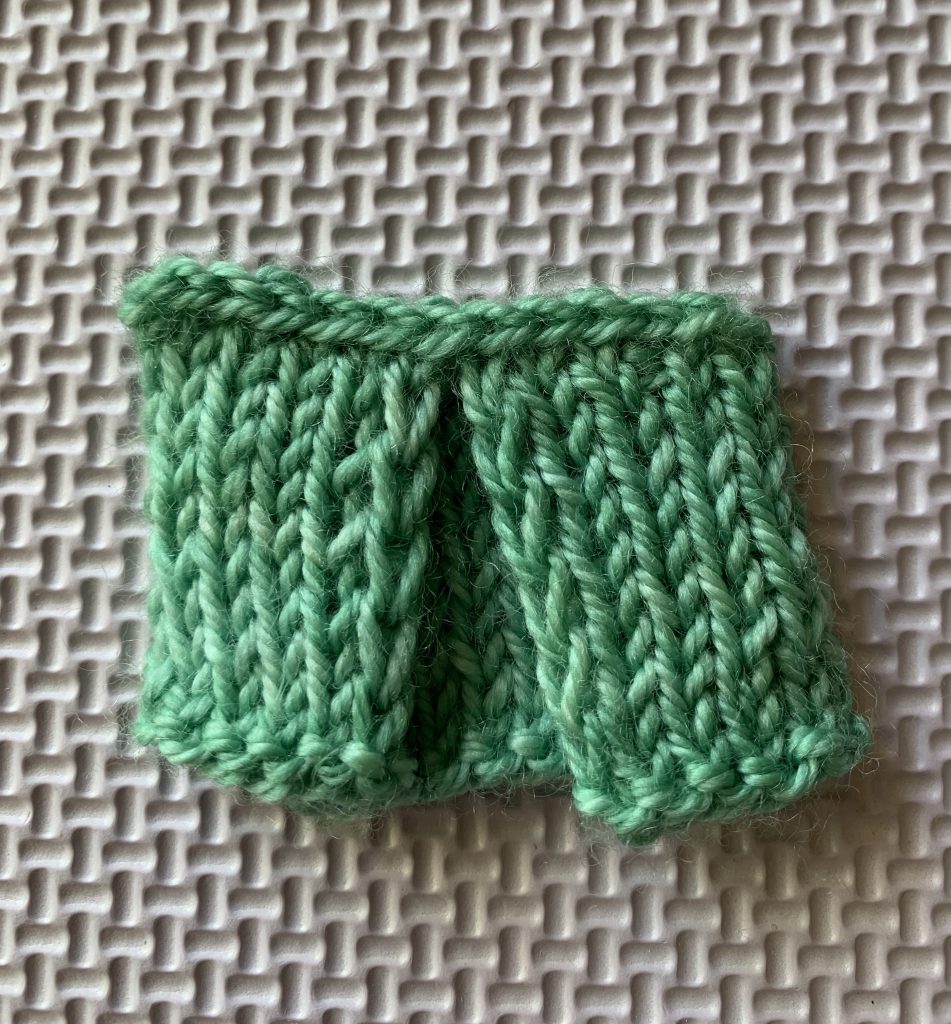
Box pleats pair a left-fold pleat with an right-fold pleat with the outside folds facing away from each other to create a wide face on the front. This is another common type of pleat found in skirts. Or you may see it at the base of the yoke in a tailored shirt, again to allow for more shoulder movement.
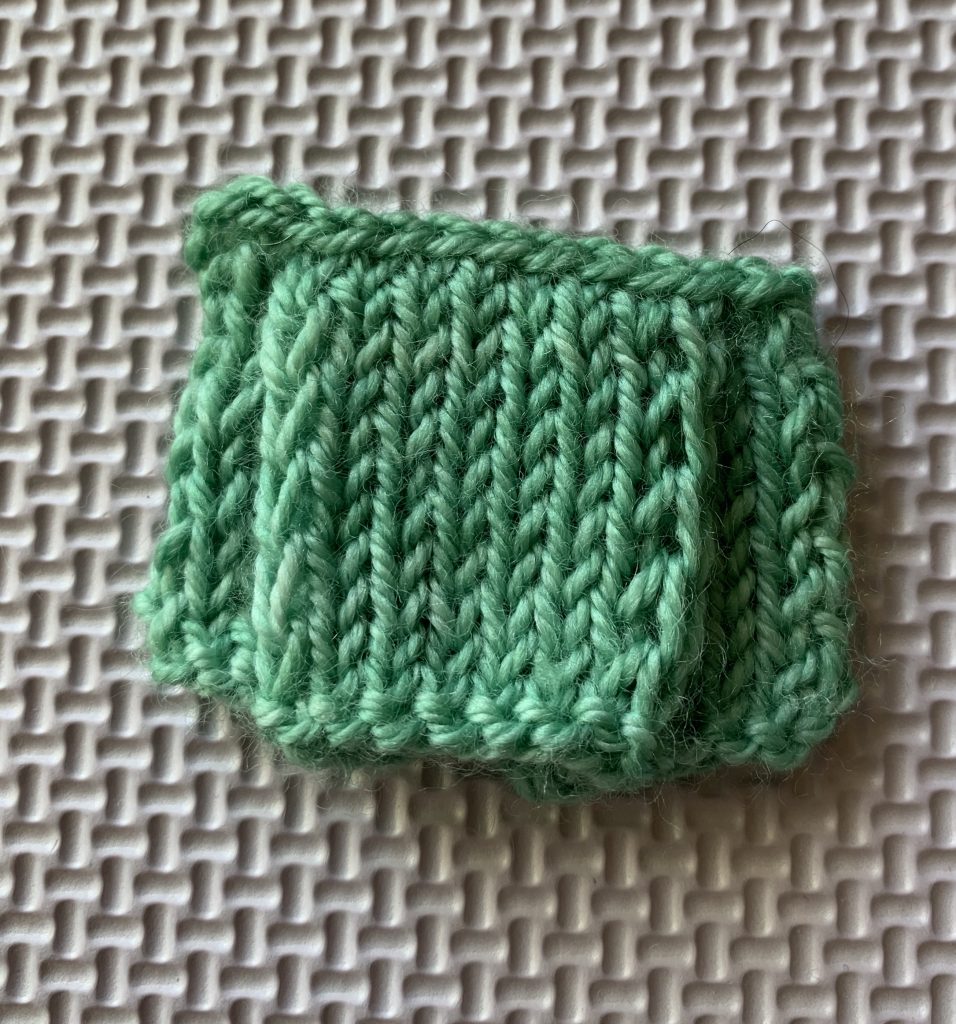
Accordion pleats have only two layers—think of a simple paper fan or curtains that are threaded onto a rod. This configuration prevents the folds from lying flat, making them difficult to secure at the top, which is probably why they are less common in knitting. Accordion pleats can however be useful in an application using a drawstring, perhaps a neckline or wrist detail, or a drawstring bag.
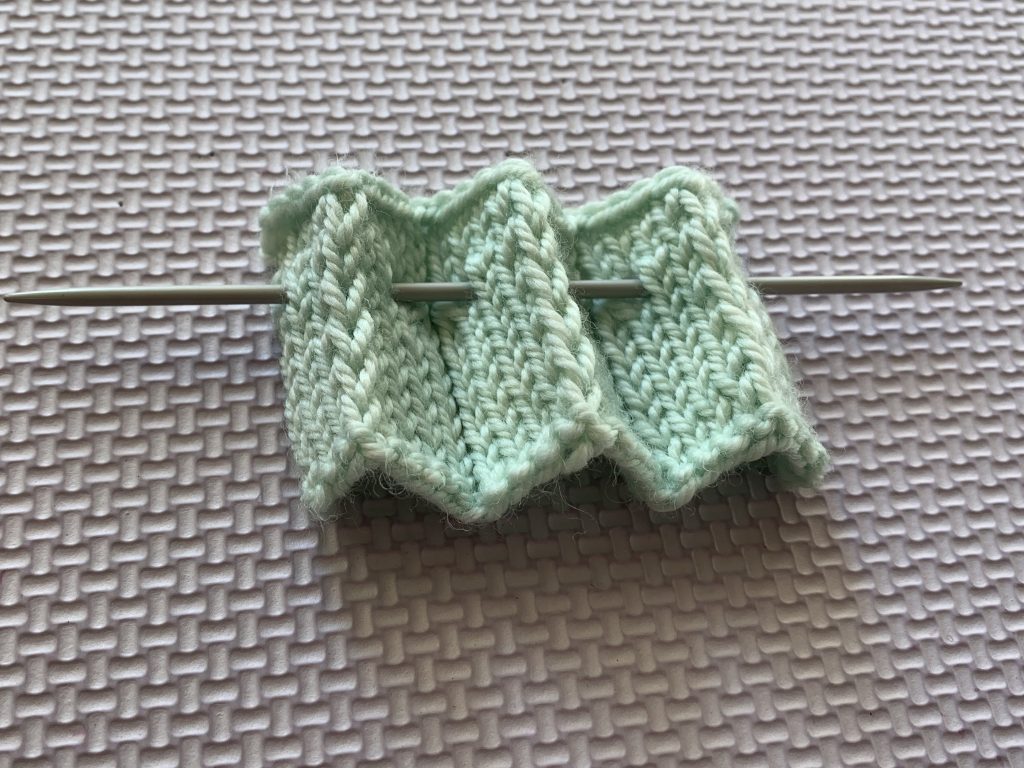
How to Make Pleats
To make a pleat, you will need to place each layer onto its own needle. You can use two double-pointed needles or short, straight cable needles in addition to the working needle. A wooden needle for the turnback layer helps to keep those stitches a little more stable when they are turned and gives a little more purchase when aligning the three needles. To avoid stretching out the stitches, be sure to use cable needles that are slimmer than the working needle.
Depending on where you will be placing the pleats in the project, you can continue the fabric from the pleating point. Or if you like, you can bind off the stitches while working the pleating row.
Right-Fold or “S” Pleats
Make right-fold or “S” pleats as follows:
Step 1: Transfer the underside stitches to one double-pointed needle, transfer the turnback stitches to another double-pointed needle, and leave the face stitches on the left-hand working needle.
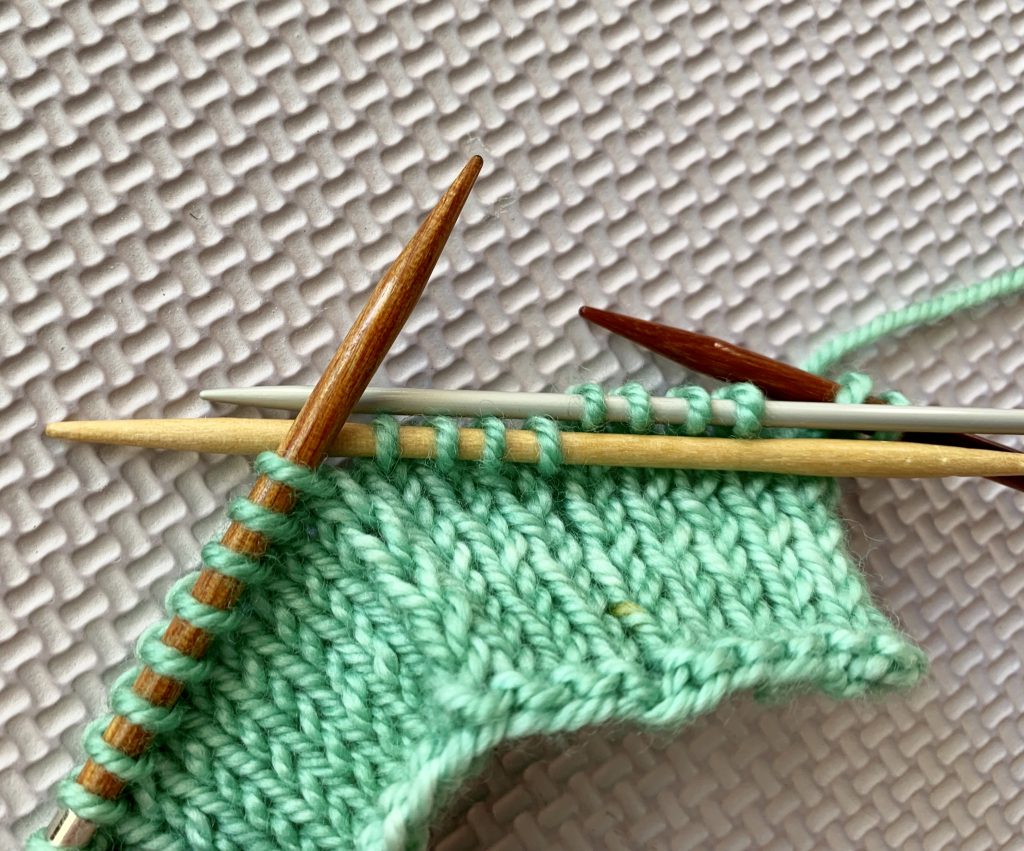
Step 2: Fold the pleat by flipping the needle with the turnback stitches counterclockwise.
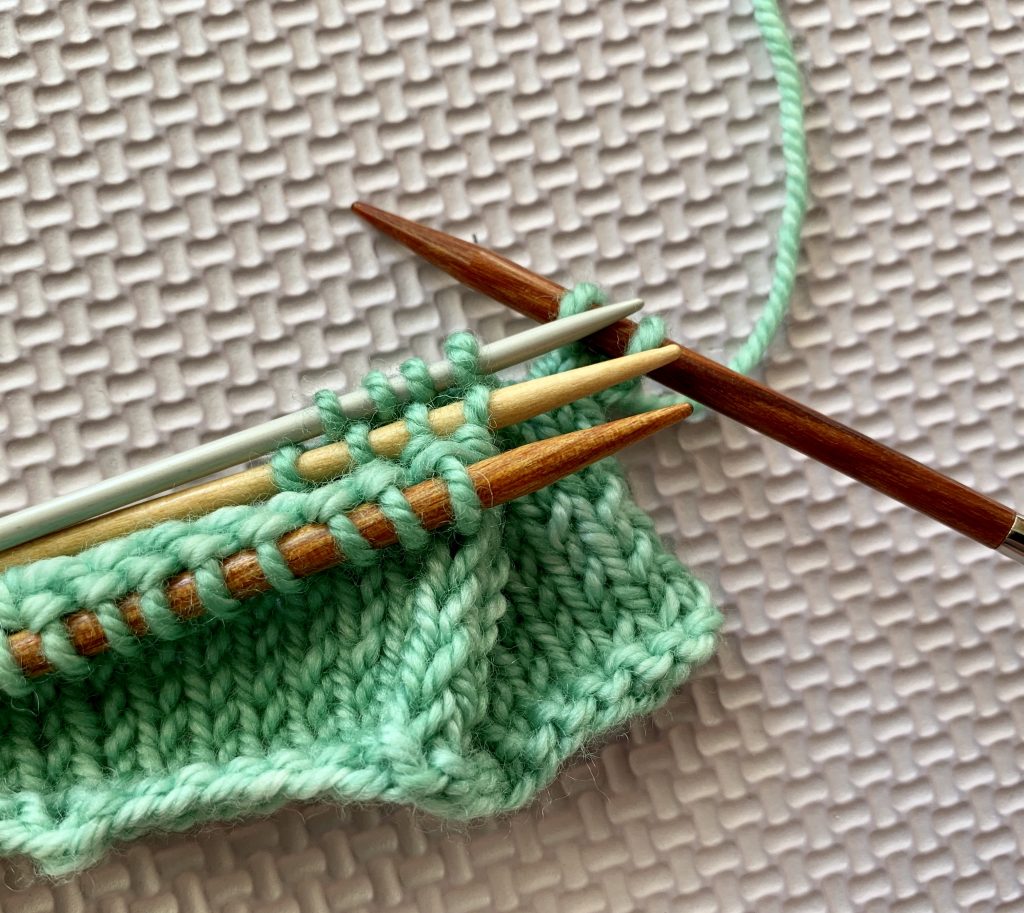
Step 3: Align the tips of the needles so they are even and parallel, with tips facing the same direction. Then *work one stitch from each needle together as one; repeat from * to the end of the pleat.
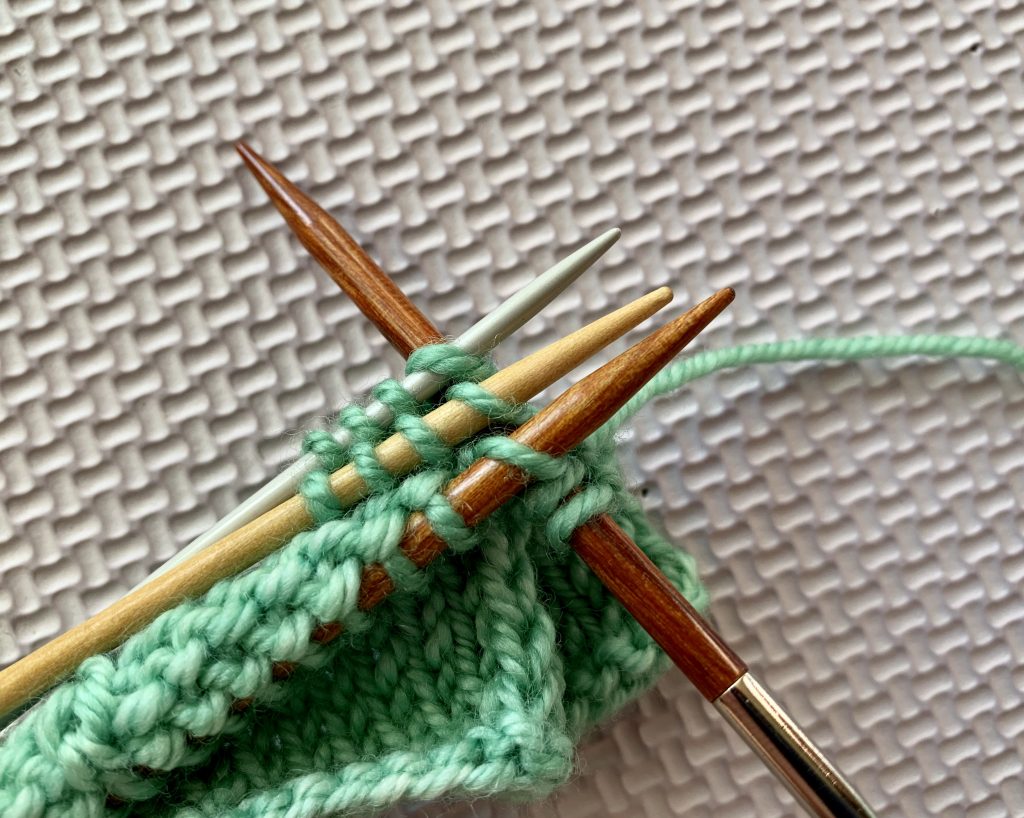
Left-Fold or “Z” Pleats
Make left-fold or “Z” pleats as follows:
Step 1: Transfer the face stitches to one double-pointed needle, transfer the turnback stitches to another double-pointed needle, and leave the underside stitches on the left-hand working needle.
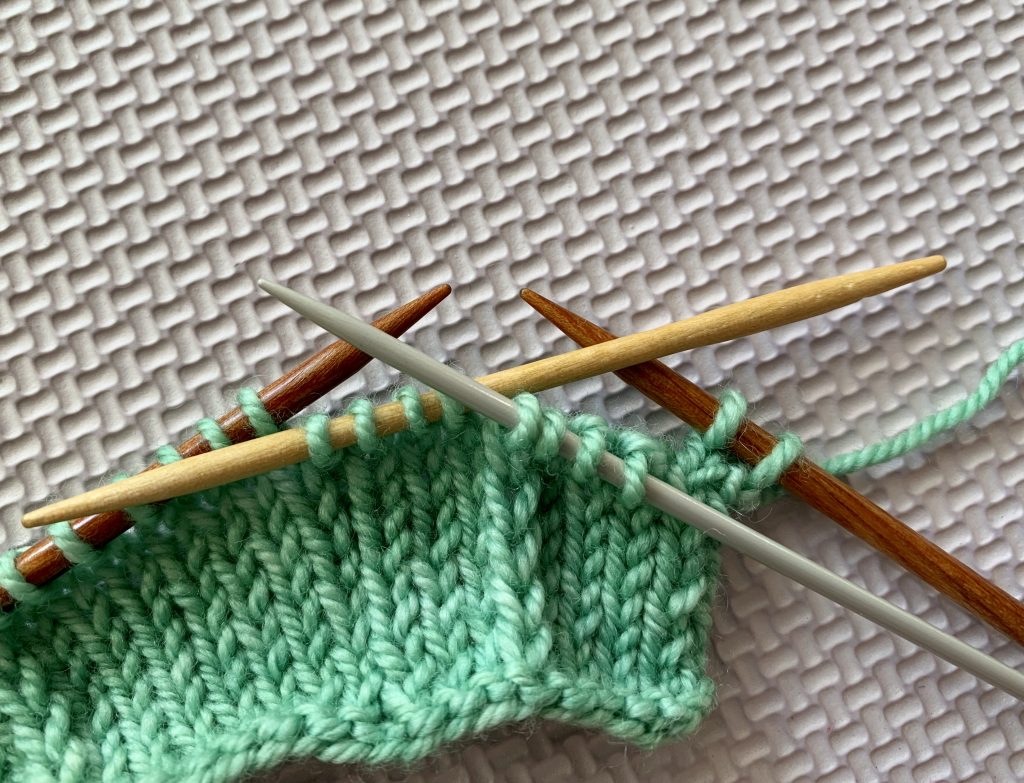
Step 2: Fold the pleat by flipping the needle with the turnback stitches clockwise.
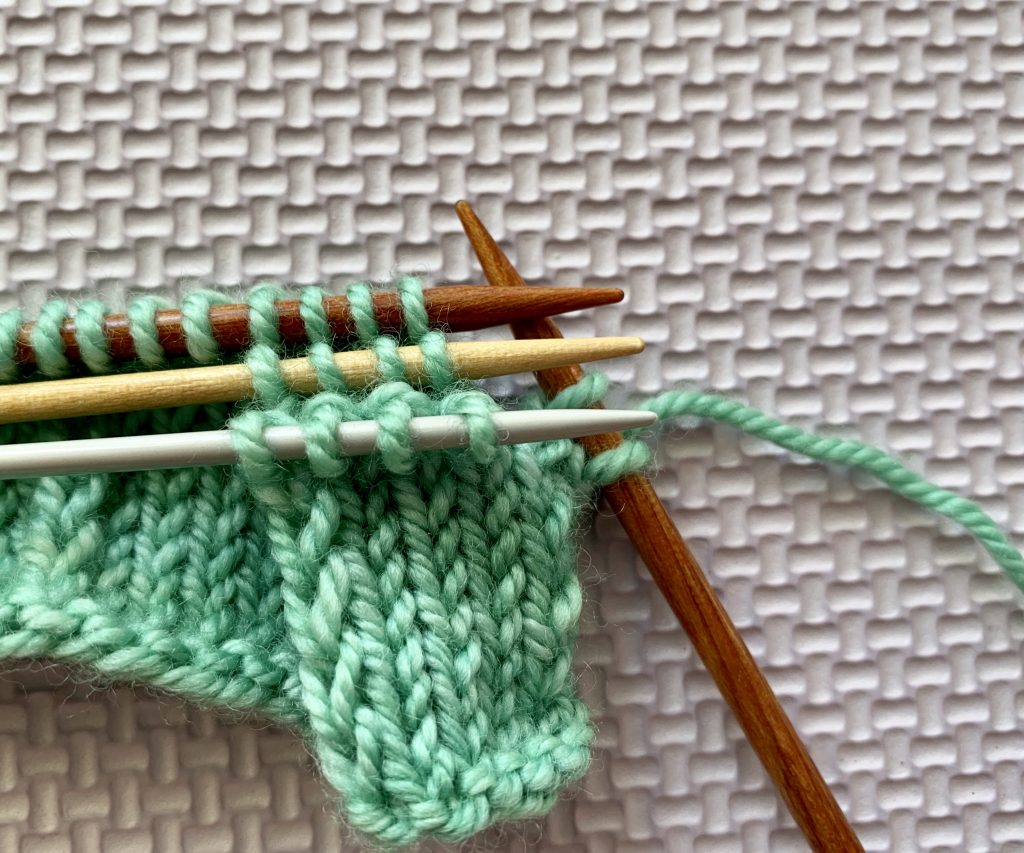
Step 3: Align the tips of the needles so they are even and parallel, with tips facing the same direction. Then *work one stitch from each needle together as one; repeat from * to the end of the pleat.
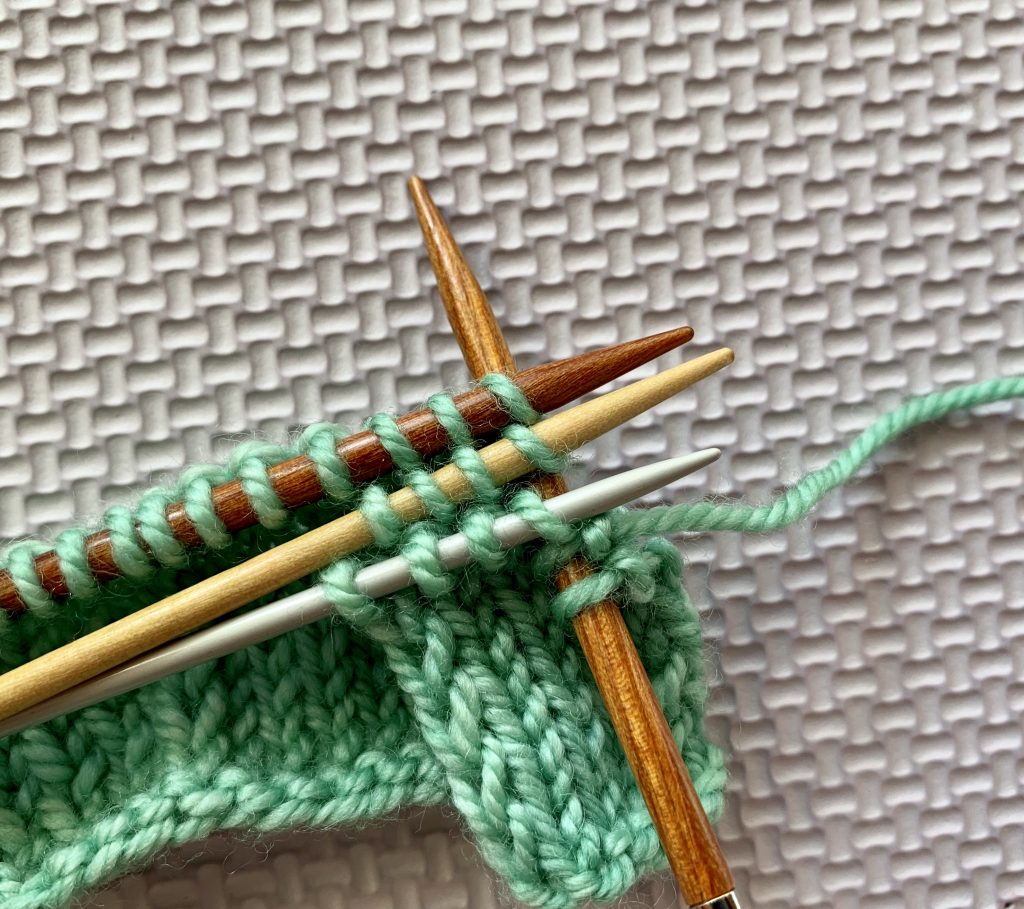
Soft vs. Crisp Pleats
Pleats are most commonly made in stockinette as the fabric is smooth and shows the pleats well. Pleat edges can be crisp or soft, depending on your preference.
Soft Pleats
Soft pleats are formed by working all stockinette stitches (or preferred stitch pattern) and simply folding the fabric where desired, before working the layers together.
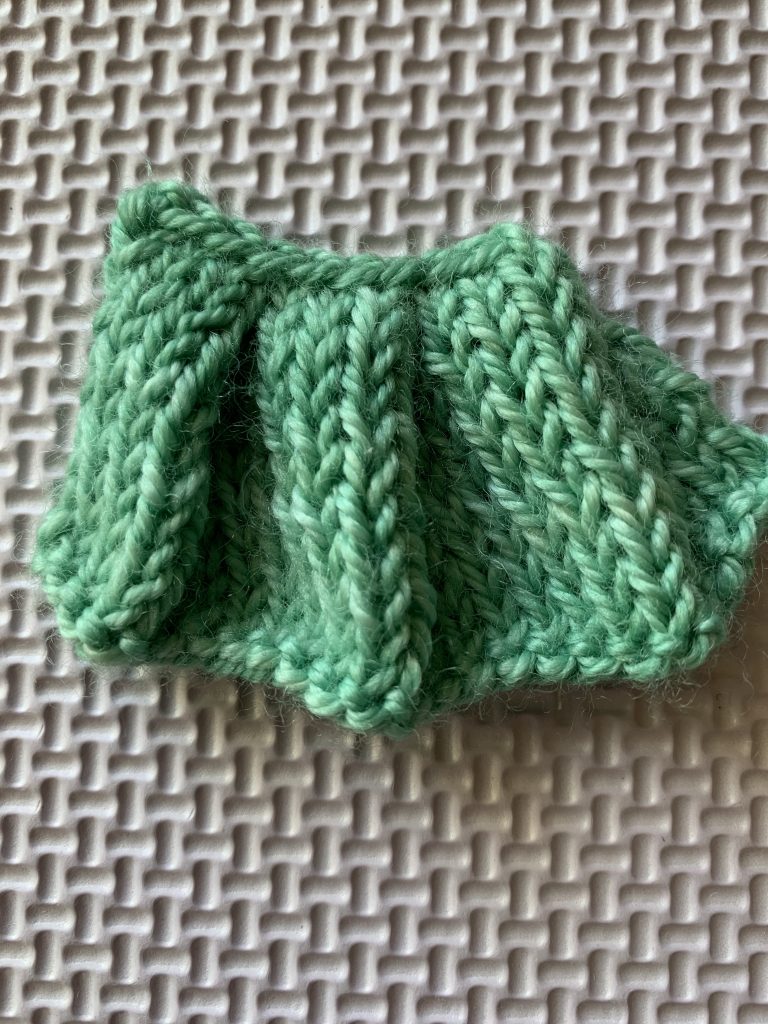
Crisp Pleats
Crisp pleats require a column of contrasting stitches at each fold line. For a crisp edge on the exterior fold, a column of knit stitches slipped on right-side rows with the yarn in back is a good choice. This technique is called a slip chain. The slipped knits blend well with the stockinette fabric but they fold back a little on themselves.
A column of purl stitches at the interior fold will make that fold draw back behind the stockinette, forming a distinct ridge. Be sure to pull the first purl after the knit ridge snugly so the knit ridge will be even. With the exception of the soft pleats photo above, all of the photos in this article show crisp pleats. The photo below shows the purl ridge on the wrong side of knife pleats.
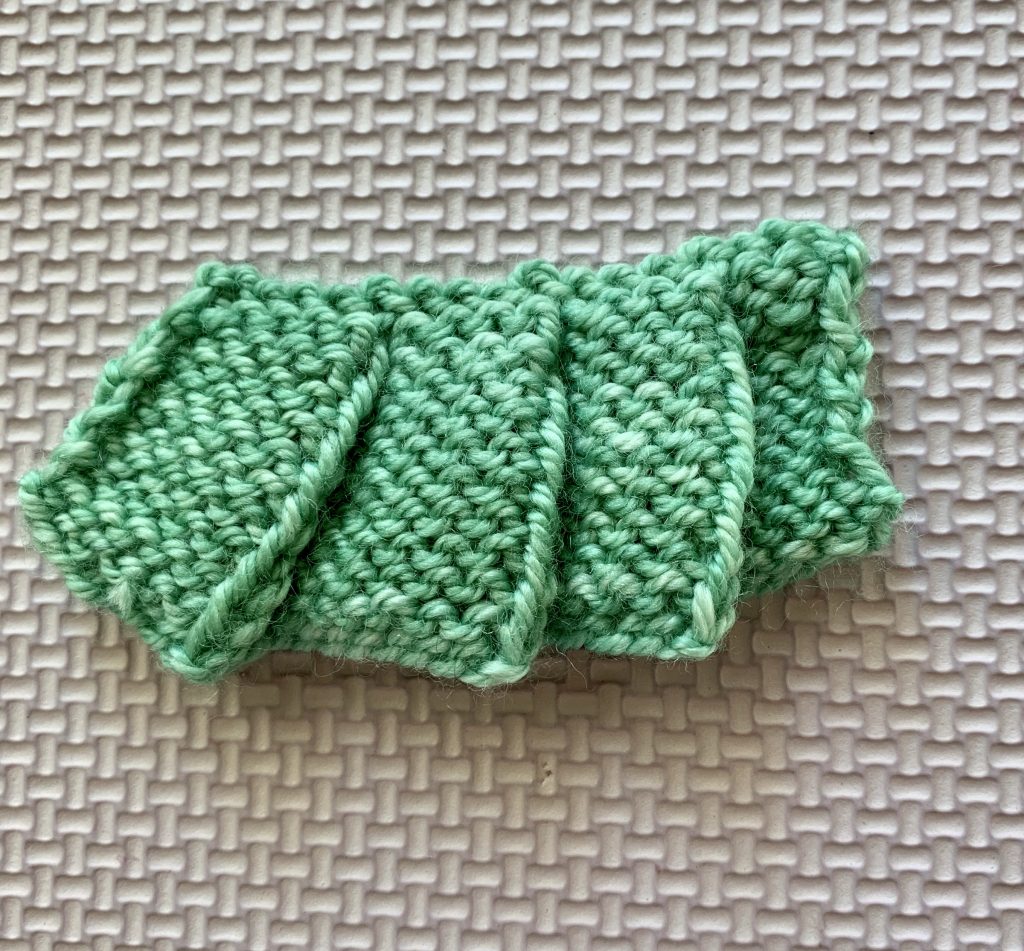
When you get to the row where the flat fabric will be folded and secured, the purl stitch will be part of the turnback and the slip chain will be part of the face. For a right-fold pleat, the slipped stitch column is to the left of the purl stitch column. For a left-fold pleat, the order is reversed.
Of course, these are not the only options for crisp pleats. Some sources recommend using a slipped chain on the reverse side for the interior fold instead of a purl column. Other sources indicate that a different stitch for the interior fold may not be needed at all.
How to Calculate for Pleats
To determine how many stitches you will need to create right-fold or left-fold pleats, begin by determining the stitch gauge in a flat swatch of the desired stitch pattern. Also determine how wide you want your pleats to be.
Next multiply the flat stitch gauge by three—one stitch for each layer. For example, if you want your pleats to be an inch wide, and your stitch gauge is 4 sts/in, you can estimate that each pleat will take 12 stitches. However, the fold lines may draw the fabric in even more than the flat gauge suggests. If you are using crisp fold lines, there’s a good chance you will need to add a couple of extra stitches to each pleat to ensure the fabric comes out to the correct size. If you add an extra stitch for each fold line, you will also need an extra stitch for the underside. It’s important to swatch the pleats to determine your pleated stitch gauge.
Yarn for Pleats
Keep in mind that the folds will add bulk to the fabric. Pleats are often made using finer weight yarns for this reason.
It’s also important to consider the blocking qualities of a particular yarn. Wool is a good example of a yarn that will retain its blocking shape and keep the pleats neat. Synthetic fibers are often less cooperative with blocking.
Conclusion
Pleats are pretty and versatile. They can be used for decoration or for making a garment more wearable. They can even be used for hiding pockets or for making your vacuum cleaner hose easier to store!
Sources
Calasibetta, Charlotte Mankey. Fairchild’s Dictionary of Fashion. Fairchild, 1998.
Editors of Vogue Knitting Magazine. Vogue Knitting. Pantheon, 1989.
Hiatt, June Hemmons. The Principles of Knitting. Touchstone, 2012.
Holladay, Arenda, and Binka Schwan. “Stitch Anatomy: Pleats.” Cast On, Nov. 2012–Jan. 2013, pp. 9–11.
Mark, Joshua J. “Fashion & Dress in Ancient Egypt.” Ancient History Encyclopedia, 27 March 2017. 12 Sept. 2019.
Michelson, Carmen, and Mary-Ann Davis. The Knitter’s Guide to Sweater Design. Interweave, 1989.
Newton, Deborah. Designing Knitwear. Taunton, 1998.
Stanley, Montse. Knitter’s Handbook. Reader’s Digest, 1993.
Thomas, Mary. Mary Thomas’s Book of Knitting Patterns. Dover, 1972.
Pattern Associated with this Article — Calypso’s Crescent
Copyright 2020, The Knitting Guild Association, Cast On Winter 2019-2020, All Rights Reserved
